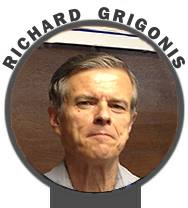Past Entry of Zippy's Telecom Blog
More Previous Columns
May 17, 2010
Parallels in the Evolution of Telephony and the Orchestration of Energy
Modern IP communications is the descendant of computer telephony, also known as Computer Telephone Integration (CTI), which is essentially the application of computer intelligence to communications. During its heyday in the 1990s, computer telephony demonstrated the beginnings of unified communications, and how (among other things) incoming phone calls, faxes and emails could be intelligently routed to and within corporate contact centers.
Today, the world of energy is as exciting as was the world of telecom back in the 1990s. Instead of applying computer intelligence to telephony, it is now being applied to power distribution in the form of the “Smart Grid.” Instead of computers orchestrating communications among corporate and residential consumers, we now have the “orchestration of energy” to those same consumers, done under the control of digital technologies that control appliances and intelligently allocate energy. Just as the clunky, dedicated circuit-switched communications network of AT&T became the more flexible packet-switched network of the Internet, so too are formerly highly-structured and restrictive energy distribution networks becoming more flexible transmission and distribution grids subject to smart network control and energy management.
It’s all what I call Intelligent Energy Orchestration (and storage). Its goal is to save money by reduce energy usage and increase electricity reliability, which in turn prevents “blackouts” and “brownouts”.
Will IEO be as big as telecom? In April 2010 Cisco CEO John Chambers described the smart grid opportunity as something “as big as the original Internet."
Early in 2010 Lux Research forecast a 250 percent growth of the global smart grid market over the next five years, expanding from $4.5 billion annual market today to $16 billion. Lux also guesstimates that in excess of two-thirds of this revenue will go to large information technology companies active in the sector, such as Accenture, IBM, and more traditional “networking” companies like Cisco Motorola and Nokia Siemens.
But the big boys were preceded by interesting new “smart grid” companies, such as EnerNOC (Nasdaq: ENOC), whose name derives from the term, Energy Network Operations Center. EnerNOC applications and services help companies reduce electricity usage during peak hours, making the whole power network more efficient. EnerNOC manages 3,250 megawatts for 2,500 customers with 5,600 locations.
Other relatively young companies in the intelligent grid sector include Silver Spring Networks, SmartSynch and Tendril Networks.
Writing in the May 3, 2010 Burlington Free Press.com, Ian Wyatt discusses both EnerNOC and an Exchange-Traded Fund (ETF) that invests exclusively in the smart grid sector, called First Trust Clean Edge Smart Grid Infrastructure Index Fund (Nasdaq: GRID). It was founded in November 2009.
I’m thinking that it’s time for Yours Truly to focus on this fascinating area that’s literally “sizzling and exploding,” as Harry Newton would say.
